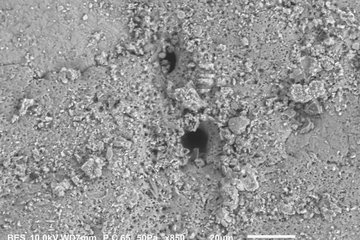Researchers sequence a new Neandertal genome
The genome of a European Neandertal allows more Neandertal DNA to be identified in present-day people
The high quality genome of a Neandertal from Croatia in southern Europe has been sequenced at the Max Planck Institute for Evolutionary Anthropology in Leipzig, Germany. This Neandertal is more closely related to the group of Neandertals that mixed with the ancestors of present-day non-Africans than the previously sequenced Neandertal from the Altai Mountains. This allowed the researchers to identify additional Neandertal DNA in the genomes of present-day people.

Researchers at the Max Planck Institute for Evolutionary Anthropology in Leipzig have sequenced to high-quality the genome of a female Neandertal from a bone discovered in 1980 in Vindija Cave, Croatia. This is the second high-quality genome sequence of a Neandertal to be published; in 2014 the same group sequenced the genome of an older Neandertal from the Altai Mountains in Siberia.
By comparing the two Neandertals the scientists could show that they were much more closely related to each other than any two humans are today. “Such a close relationship for individuals that lived thousands of kilometers apart and probably thousands of years apart shows that Neandertals must have had a small population size” says Fabrizio Mafessoni, a researcher at the Max Planck Institute.
The team also compared the two Neandertals to people living today to learn more about the Neandertals who mixed with the ancestors of present-day non-Africans. “We see that the Croatian Neandertal is more closely related to the Neandertals that mixed with our ancestors than the older Neandertal from Siberia”, explains Steffi Grote, who analyzed the genomes in Leipzig. The research showed that between 1.8 and 2.6 percent of the genomes of people outside of Africa originates from this admixture.
Using the new Neandertal genome the researchers were able to identify additional Neandertal variants that entered the genomes of modern humans by interbreeding. “The Croatian Neandertal genome helps us to identify more of the Neandertal DNA in humans living today” says Kay Prüfer who together with Svante Pääbo led the analysis of the new Neandertal genome. “Some of these variants seem to provide protection from certain diseases while other variants are associated with increased susceptibility to some diseases.”
KP, SJ/HR












